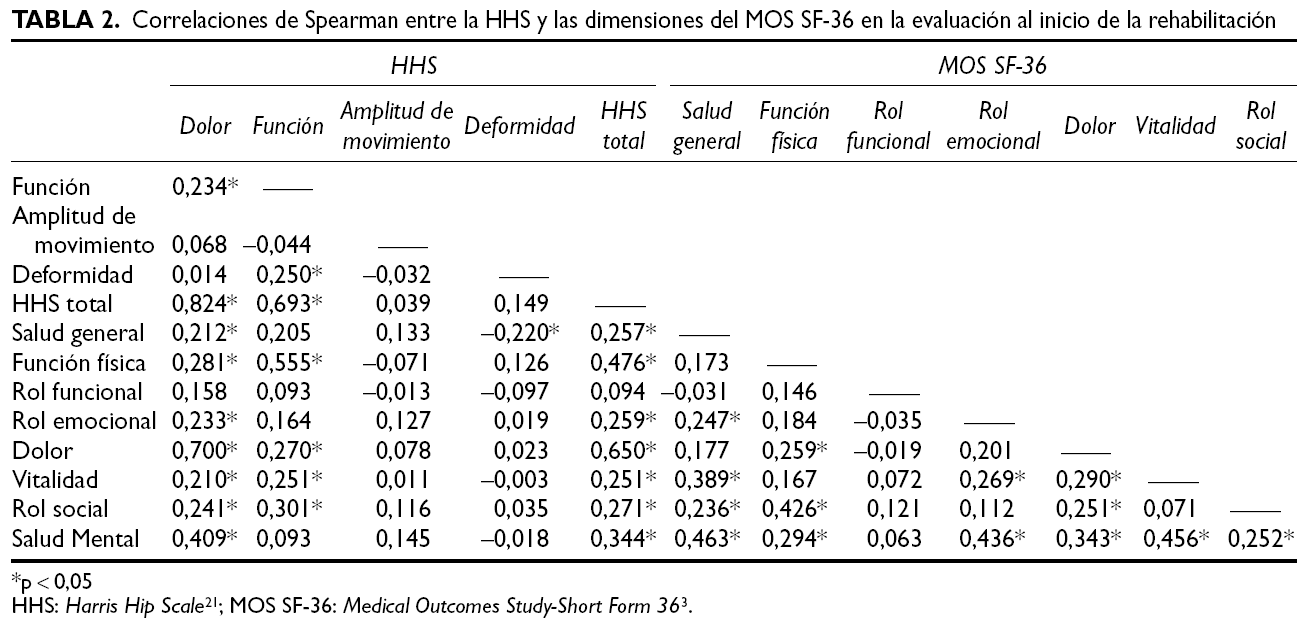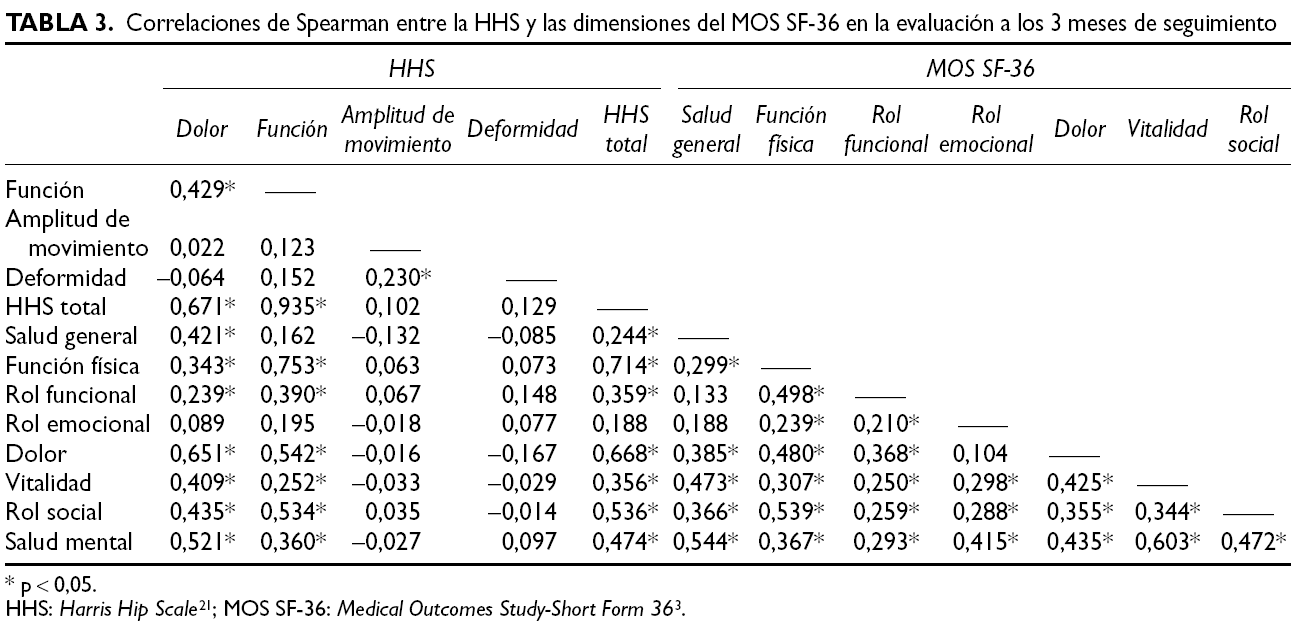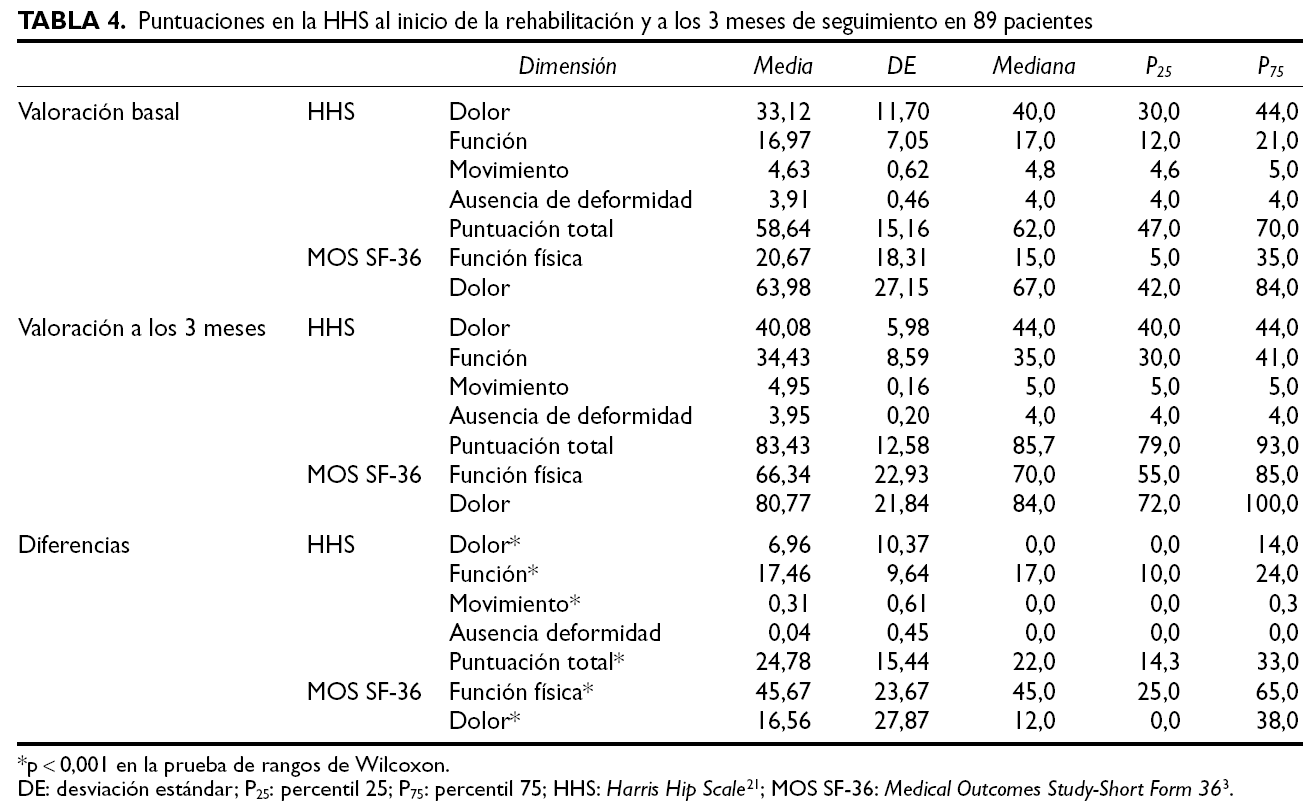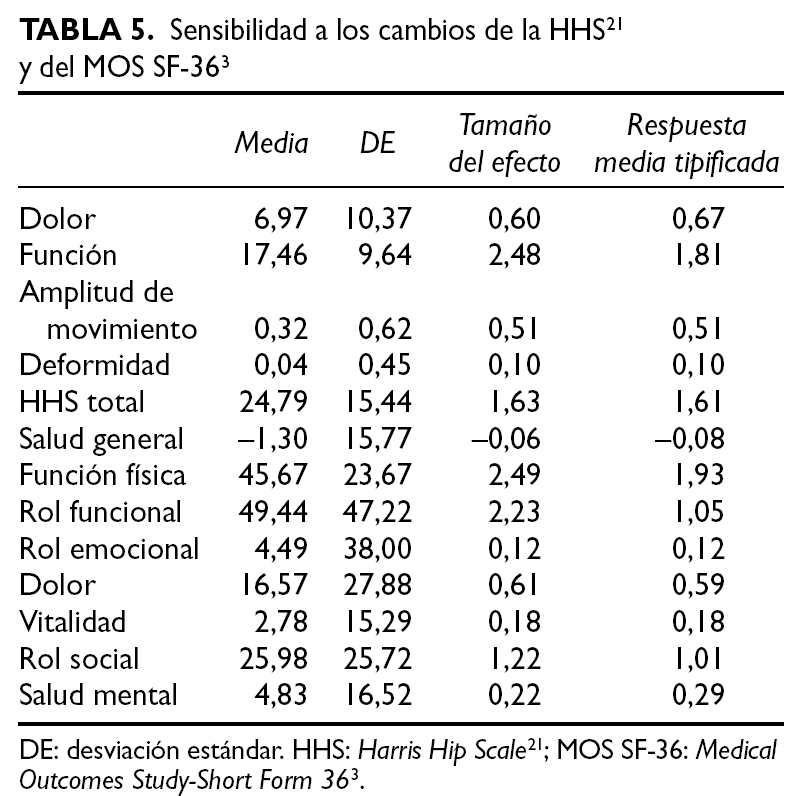Journal Information
Vol. 39. Issue 4.
Pages 147-154 (July 2005)
Vol. 39. Issue 4.
Pages 147-154 (July 2005)
Validez de la escala de cadera de Harris en la rehabilitación tras artroplastia de cadera
Validation of the Harris Hip Score in rehabilitation after hip arthroplasty
Visits
13067
MJ. Navarro Colladoa, S. Peiró Morenob, L. Ruiz Jareñoc, A. Payá Rubioc, MT. Hervás Juanc, P. López Matéuc
a Servicio de Rehabilitación. Hospital Doctor Peset. Valencia. Fundación Instituto de Investigación en Servicios de Salud. Valencia.
b Fundación Instituto de Investigación en Servicios de Salud. Valencia. Escuela Valenciana de Estudios para la Salud. Valencia.
c Servicio de Rehabilitación. Hospital Doctor Peset. Valencia.
This item has received
Article information
Abstract
Full Text
Bibliography
Download PDF
Statistics
Tables (5)
TABLA 1. Porcentaje de casos que toman los valores máximo (efecto techo) y mínimo (efecto suelo) en la HHS y en las dimensiones función física y dolor del MOS SF-36
TABLA 2. Correlaciones de Spearman entre la HHS y las dimensiones del MOS SF-36 en la evaluación al inicio de la rehabilitación
TABLA 3. Correlaciones de Spearman entre la HHS y las dimensiones del MOS SF-36 en la evaluación a los 3 meses de seguimiento
TABLA 4. Puntuaciones en la HHS al inicio de la rehabilitación y a los 3 meses de seguimiento en 89 pacientes
TABLA 5. Sensibilidad a los cambios de la HHS 21 y del MOS SF-36 3
Show moreShow less
Antecedentes. El instrumento más utilizado para evaluar los resultados obtenidos tras artroplastia de cadera es la escala de cadera de Harris (Harris Hip Score, HHS) que, sin embargo, apenas cuenta con estudios de validez. El objetivo de este trabajo es analizar las propiedades clinimétricas de la HHS. Material y método. Cohorte prospectiva de 89 pacientes en tratamiento rehabilitador tras artroplastia de cadera, en los que se administró al inicio de la rehabilitación y a los 3 meses de seguimiento, la HHS y el Medical Outcomes Study-Short Form-36 (MOS SF-36). Se valoró la validez de contenido, de constructo, de criterio y la sensibilidad a los cambios de la HHS y sus subescalas. Resultados. La HHS no mostró efectos techo o suelo de importancia y sus puntuaciones se correlacionaron fuertemente con las dimensiones análogas del MOS SF-36, en particular con las de función física y dolor. Las diversas subescalas de la HHS y la puntuación total, mostraron diferencias significativas entre la evaluación basal y a los 3 meses (excepto la subescala de deformidad). Las dimensiones función física, dolor y rol funcional del MOS SF-36 mostraron un comportamiento similar. El tamaño del efecto fue elevado para la subescala de función y la puntuación global de la HHS, y moderado o pequeño para el resto. Las dimensiones función física, rol funcional y rol social del MOS SF-36 también mostraron un elevado tamaño del efecto. Conclusiones. La HHS es un instrumento válido y sensible a los cambios en pacientes en rehabilitación tras artroplastia de cadera.
Palabras clave:
Prótesis de cadera
Rehabilitación
Capacidad funcional
Calidad de vida
Validez
Background. The Harris Hip Score (HHS) is the most widely used instrument to measure results after hip arthroplasty. However, very few studies have been made to validate this tool. The aim of this study is to analyze the HHS clinimetric properties. Material and method. A prospective cohort of 89 patients in rehabilitation after hip arthroplasty in whom the HHS and the Medical Outcomes Study Survey Form-36 (MOS SF-36) were both administered at the beginning of rehabilitation and after three months. The content, construct and criteria validity, and responsiveness of the HHS and its subscores were analyzed. Results. The HHS did not show a significant ceiling or floor effect and it correlated strongly with the analogous dimensions of the MOS SF-36, particularly Physical Function and Pain. The different subscores and the overall score of the HHS showed significant differences between the basal evaluation and after three months (with the exception of Deformity). The Physical Function, Pain and Functional Role dimensions of the MOS SF-36 behaved similarly. The magnitude of the effect size was high for the Function subscore and the overall score, and moderate to small for the others. The Physical Function, Functional Role and Social Role dimensions of the MOS SF-36 showed similar behaviour. Conclusions. The HHS is a valid and responsive instrument in patients undergoing rehabilitation after hip arthroplasty.
Keywords:
The HHS is a valid and responsive instrument in patients undergoing rehabilitation after hip arthroplasty
These are the options to access the full texts of the publication Rehabilitación
Subscriber
Subscribe
Purchase
Contact
Phone for subscriptions and reporting of errors
From Monday to Friday from 9 a.m. to 6 p.m. (GMT + 1) except for the months of July and August which will be from 9 a.m. to 3 p.m.
Calls from Spain
932 415 960
Calls from outside Spain
+34 932 415 960
E-mail











